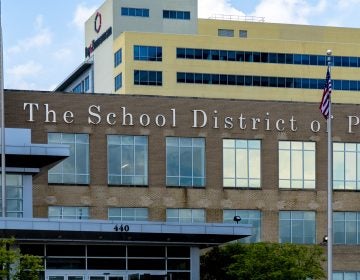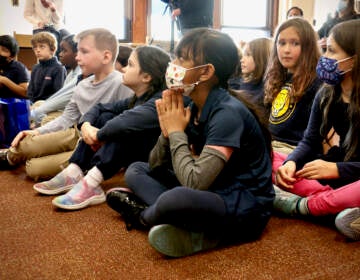Philly’s flip to all-virtual learning
A week after Philly unveiled its back-to-school plan, it reversed course with a decision that reflects tough choices between the virus and thousands of students' education.
Listen 17:33
The Philadelphia Board of Education meets on July 9, 2018, for the first time since the dissolution of the state appointed School Reform Commission. (Emma Lee/WHYY)
When the Philadelphia School District unveiled a “hybrid” plan to bring students back into the classroom part-time this fall, the backlash from parents and teachers was swift. One week later, the district abruptly changed course and said school would happen entirely online until almost Thanksgiving.
WHYY education reporter Avi Wolfman-Arent explains why that decision is still not working for everybody — and how tough it is to navigate the risks of COVID-19 and disrupting the education of tens of thousands of children.

Hear the whole story on The Why
Interview highlights
On the overwhelming objections to the original ‘hybrid’ plan
There was strong opposition for instance, from the union that represents principals and assistant principals. There was this incredible, remarkable, organized effort from these school building administrators to say, “We do not support this plan.” These are the people who were going to be responsible for carrying out the plan …
And it’s also really important to point out that the district, the School District of Philadelphia has dissolved a lot of trust with the community. Remember, they’ve had a lot of problems with asbestos and their aging school buildings and lead and mold …
And one thing I thought that was also really interesting is that people felt that this hybrid model doesn’t necessarily really solve any issues. Like, if kids are only in school two days a week, that still creates a huge childcare burden for parents. And then the teachers are in the school four days a week. And yes, the school itself might be a little less crowded than usual, but they’re still exposing themselves to tremendous risk, potentially risking their lives.
On why the new plan isn’t working for everyone
There were still some dissenters. For instance, Nicole Hunt, who’s president of the union that represents the district’s school climate staff and food service workers said that this all-virtual plan was going to hurt the children of essential workers, like the folks that she represents.
“Not every student has educator at home to help with virtual schools,” Hunt said. “You have many single parents who are both the breadwinners and caretakers and nowadays supposed to choose whether to go to work or stay home with the students. All-virtual school won’t help children. Some are going to be left home alone and won’t be in class, but on the streets.”
On why there are no good choices — only tough calls
What this really all comes down to is a choice between two risks. The first risk is the risk posed by the coronavirus itself. And it’s a risk. We know, well, we understand that this disease, sickens people and it kills people. And we also know that it thrives when people are indoors exposed to each other for prolonged periods of time. And although we can try to make schools safe, we can’t change the fact that people will be indoors in somewhat close proximity for extended periods of time repeatedly.
The second risk is the risk that’s associated with disrupting the education of tens of thousands of children simultaneously in an unprecedented way. And some of those kids we imagine are going to be fine in the end. They will find some way to make up for whatever they’re missing right now, but there’s going to be some kids, and we don’t know how many, but there would likely be some kids who will be so unmoored by this experience, that it will have lifelong consequences for them — consequences that will perhaps lessen the quality of their lives, or even shorten the length of their lives in the long run. And so we as a city and as a society have to pick between these two risks and frankly, there is no good choice.
WHYY is your source for fact-based, in-depth journalism and information. As a nonprofit organization, we rely on financial support from readers like you. Please give today.






